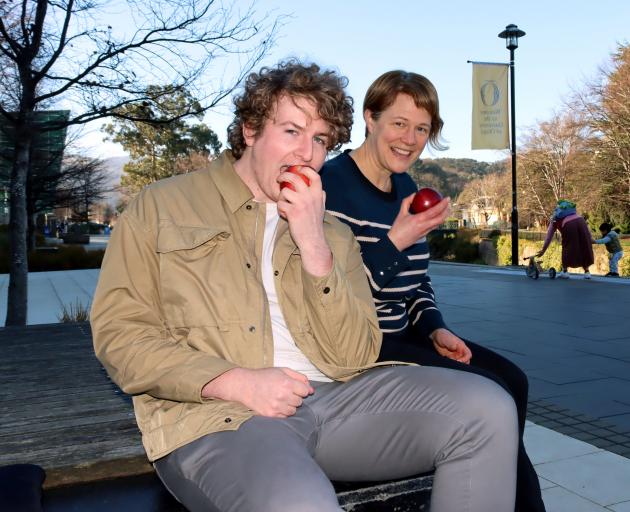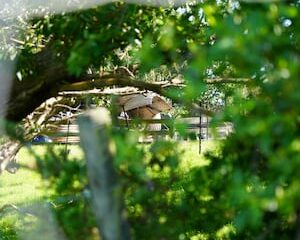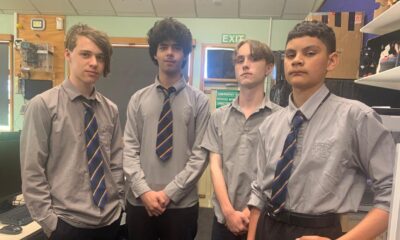Science
Research Unveils Diversity of Heritage Apples in New Zealand

A significant research initiative is underway to preserve and identify over 300 apple varieties from the Jim Dunckley Heritage Orchard, located in Otago, New Zealand. Conducted by Aaron Hewson, a master of science student in plant biotechnology, this project aims to ensure the continued propagation of heritage apple cultivars, which represent one of the most diverse collections of apple types in the country.
Established 25 years ago by the Coastal Otago Branch of the New Zealand Tree Crops Association, the orchard is home to unique varieties, some with vividly distinctive names such as Peasgood Nonsuch and Warner’s King. Hewson is committed to providing genetic identification for these cultivars, enhancing the association’s efforts to preserve their rich heritage. “I am doing this research for them so they can continue to preserve and propagate the heritage cultivars, with confident identification by genetic means,” he explained.
The collection features apples gathered in the 1990s by the late Jim Dunckley, who sourced them from various locations in Otago and Southland. Most of these varieties originated from an old Plant & Food Research orchard in Clyde. Hewson described the collection as a “real kind of hodgepodge mix,” noting that some trees were named by local farmers based on nearby landmarks, which sometimes led to mismatches in genetic identities.
In one notable instance, a sample identified as Granny Smith, commonly found in supermarkets, was genetically identical to another cultivar named Lord Lambourne. “These two cultivars should be really different, but the samples were saying they were genetically the same. So one of those names has to be wrong,” Hewson stated.
To reveal the underlying DNA of the apple varieties, samples were meticulously collected by students and staff from the Plant Biochemistry Lab at the University of Otago. These samples were freeze-dried, labelled, and sent to a laboratory in France for analysis, facilitated by Plant & Food Research, now part of the Bioeconomy Science Institute. Hewson credited his co-supervisor, Dr. Elena Lopez-Girona, for her invaluable support throughout the process. “It has been very beneficial to have her expertise,” he said.
The genotyping process employs a technology called SNP chip analysis, which examines approximately 50,000 known DNA hotspots in each apple leaf. This method generates a rapid genetic fingerprint, determining if two trees belong to the same variety or represent distinct cultivars.
As global biosecurity regulations complicate the importation of new apple genetics, the local collection could play a crucial role in enhancing disease resistance and other desirable traits. Hewson pointed out that while there are around 10,000 different apple varieties worldwide, all commercial varieties trace back to just six original apples, creating a narrow genetic base.
According to Associate Professor Lynnette Brownfield, who also supervises Hewson’s research, identifying the varieties in the orchard is essential for future breeding programs. “Because commercial apples in New Zealand come from a narrow genetic base, identifying what is in the orchard could help breeders find fresh genes, including disease resistance, to widen future breeding options,” she noted.
The Coastal Otago Branch of the New Zealand Tree Crops Association, which owns the orchard, will determine how the research findings will be utilized. The objective is to assign identification labels to all trees in the collection, ensuring comprehensive knowledge of the varieties. This initiative will enable communication with apple breeders, ranging from backyard growers to organizations like Plant & Food Research, and provide germplasm as needed.
With this research, Hewson and his team are laying the groundwork for a robust future in apple cultivation, safeguarding the genetic diversity that heritage varieties offer.
-

 World1 week ago
World1 week agoPrivate Funeral Held for Dean Field and His Three Children
-

 Top Stories2 weeks ago
Top Stories2 weeks agoFuneral Planned for Field Siblings After Tragic House Fire
-

 Sports3 months ago
Sports3 months agoNetball New Zealand Stands Down Dame Noeline Taurua for Series
-

 Entertainment3 months ago
Entertainment3 months agoTributes Pour In for Lachlan Rofe, Reality Star, Dead at 47
-

 Entertainment2 months ago
Entertainment2 months agoNew ‘Maverick’ Chaser Joins Beat the Chasers Season Finale
-

 Sports3 months ago
Sports3 months agoSilver Ferns Legend Laura Langman Criticizes Team’s Attitude
-

 Sports1 month ago
Sports1 month agoEli Katoa Rushed to Hospital After Sideline Incident During Match
-

 World2 weeks ago
World2 weeks agoInvestigation Underway in Tragic Sanson House Fire Involving Family
-

 Politics2 months ago
Politics2 months agoNetball NZ Calls for Respect Amid Dame Taurua’s Standoff
-

 Top Stories2 weeks ago
Top Stories2 weeks agoShock and Grief Follow Tragic Family Deaths in New Zealand
-

 Entertainment3 months ago
Entertainment3 months agoKhloe Kardashian Embraces Innovative Stem Cell Therapy in Mexico
-

 World4 months ago
World4 months agoPolice Arrest Multiple Individuals During Funeral for Zain Taikato-Fox


















